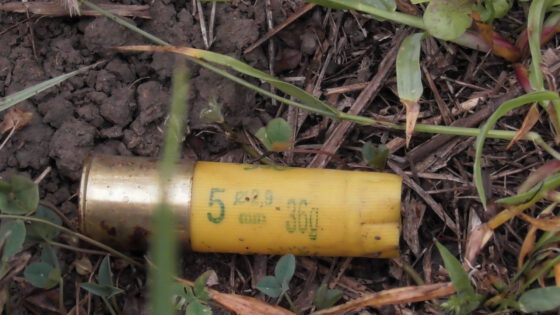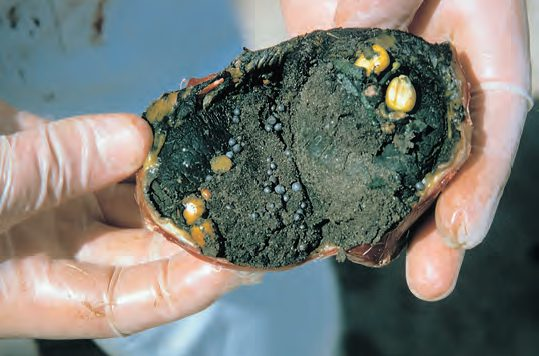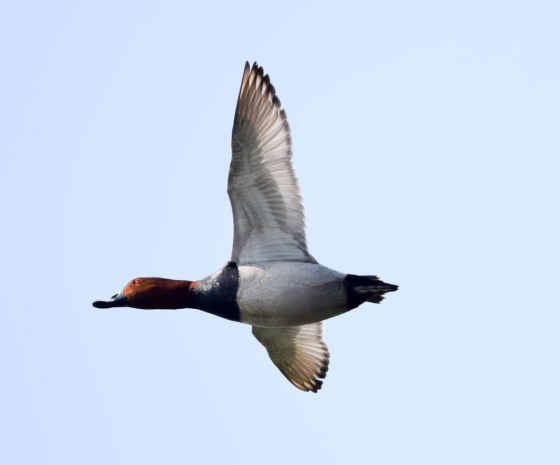Lead ammunition finally banned from wetlands across the EU
It is estimated that stopping the use of lead shot will save the lives of as many as one million waterfowl that die from lead poisoning every year
- 15.02.2023.

As of today, the use of even just carrying ammunition with lead shot in marshy (wet) habitats and 100 meters around them is illegal in all 27 EU countries as well as in Iceland, Norway and Liechtenstein.
In Croatia, the use of lead shot has been banned for ten years, but the ban was not respected and no penalties were prescribed. The Regulation on Registration, Evaluation, Authorization and Restriction of Chemicals (REACH) comes into force today, following the end of a two-year transition period given to EU member states to prepare for the change.
What exactly will be punished?
The REACH Regulation prohibits taking any of the following actions:
- firing shot containing lead in a concentration equal to or greater than 1% by mass;
- carrying such shot while shooting in a wetland or as part of an expedition to a wetland with the intention of shooting.
The use and possession of lead shot in wetland habitats will be severely punished. Penalties in Croatia are prescribed by the Law on the Implementation of Regulation (EC) no. 1907/2006 of the European Parliament and the EC Council on the registration, evaluation, authorization and restriction of chemicals. A hunting license holder will be fined 6,636.14 to 13,272.28 euros (50,000 to 100,000 kuna). A fine of EUR 1,327.22 to EUR 1,990.84 (from HRK 10,000 to HRK 15,000) will be imposed on both the responsible person at the hunting authority (most often the president of the hunting association) and the perpetrator (hunter who violates the ban). Supervision will be performed by the sanitary inspection of the State Inspectorate of the Republic of Croatia.
For the purposes of the ban, the definition of wetlands used in the Convention on Wetlands of International Importance (Ramsar Convention) will be used, as this definition is comprehensive and includes all types of wetlands: marine-coastal wetlands (e.g. coastal lagoons, rocky shores, coral reefs), river mouths (e.g. river delta areas, tidal marshes), wetlands along lakes, rivers and streams, wetlands (e.g. wet meadows, reed beds, floodplain forests and crets) and anthropogenic wetlands (e.g. reservoirs, reservoirs, ponds, salt pans, river channels or submerged mines).
Why prohibition and fines at all?
Uporaba olova u lovstvu sveobuhvatni je znanstveni problem koji negativno utječe i na prirodu i na ljudsko zdravlje. Svjetska zdravstvena organizacija (WHO) prepoznaje olovo kao jednu od najopasnijih tvari u općoj uporabi, zajedno s opasnim pesticidima, azbestom, smogom ili živom.

Lead shot in Canada goose gizzard – foto: M. Friend (USGS)
It is estimated that wetlands in Europe are polluted annually with 4,000 to 5,000 tons of lead shot. Lead shot is particularly problematic for wading birds, who ingest the shot grains (lead pellets), mistaking them for pebbles. Since birds do not have teeth to chew their food, they swallow pebbles to break up hard food in gizzard, a muscular stomach made of thick, muscular walls, a specialized organ developed in grain-eating birds. Birds very often swallow spent shot from the soil or mud. Swallowed lead shot dissolves in the muscle stomach and causes poisoning. Some of the more common species threatened by lead shot are Common Pochard, Ferruginous Duck, Northern Pintail, mallards, and Greater Flamingo.

Common Pochard (Aythya ferina), one of the species most threatened by lead shot poisoning (foto: Biom)
British research revealed that in Europe 32% of Pintails (every third), 24% of Common pochards (every fourth) and 12% of Mallards (almost one in six) have lead shot in their gizzard (Pain D., Mateo R., Green R., 2019). Lead poisoning in wild duck species was also confirmed by Croatian researchers. “The way of eating explains the higher content of lead (0.687±1.182 mg/kg) determined in the liver samples of Common pochard, caused by the consumption of lead shot from the bottom of the pond and subsequent resorption in the stomach. This fact is supported by previous research that indicates that Common pochards have a great tendency to consume lead shot.” (Florijančić et. al., 2010).
Lead from shot also poses a great danger to consumers of game that has been shot. Lead negatively affects almost every organ system. It’s a silent killer. Symptoms of poisoning are imperceptible, and even small amounts have a negative effect on health. In adults, lead causes reduced cognitive abilities, lack of concentration, memory loss, headaches, fatigue, muscle pain, kidney damage, numbness or pain in the limbs. Lead is especially dangerous for children and pregnant women, where lead poisoning can cause irreversible damage to the nervous system. The consumption of game meat shot with lead shot is not safe because even meat that has been cleaned of lead pellets contains lead particles. Research has shown that in one shot pheasant there are on average 40 small lead particles, each smaller than 2 mm (Green R., Taggart M., Pain D., Smithson K., 2022). Moreover, a study conducted in North Dakota (USA) shows that game meat consumers have 50% more lead in their blood than people who do not eat game (Iqbal S. et al., 2009).
It is estimated that stopping the use of lead shot will save the lives of as many as one million waterfowl that die from lead poisoning every year. The continuous poisoning of wetlands and the wildlife that depends on them will end. The ban will also reduce secondary poisoning of raptors and scavengers, bird species that are regularly poisoned by eating prey contaminated with lead shot.
Call on EU countries to make sure the ban is enforced
The BirdLife Partnership has been working to have this poisonous ammunition banned for more than 20 years.
Barbara Herrero, Senior EU Nature Policy Officer, BirdLife Europe:
“This is huge. Despite banning lead from paint, batteries, pencils, and virtually everything else several decades ago, it was still allowed to poison our shared environment – even when alternatives exist. With this ban, the EU has addressed a significant part of the problem. We now call on EU countries to make sure the ban is enforced.”
“Waterfowl hunting with lead shot has been banned in Croatia for 10 years. Until now, no penalties were prescribed, so no one complied with the ban. Stores did not offer an alternative to lead shot because there was no demand for it. As of today, the situation is completely changing. Failure to comply with the ban constitutes poaching, but also a violation of sanitary regulations. The penalties are huge. It is necessary to ensure a realistic and successful implementation of the ban so that we can finally stop lead poisoning of waterfowl. We will be consistent in advocating the implementation of the ban in Croatia,” said Boleslaw Slocinski, Associate for Nature Conservation at Association Biom.


